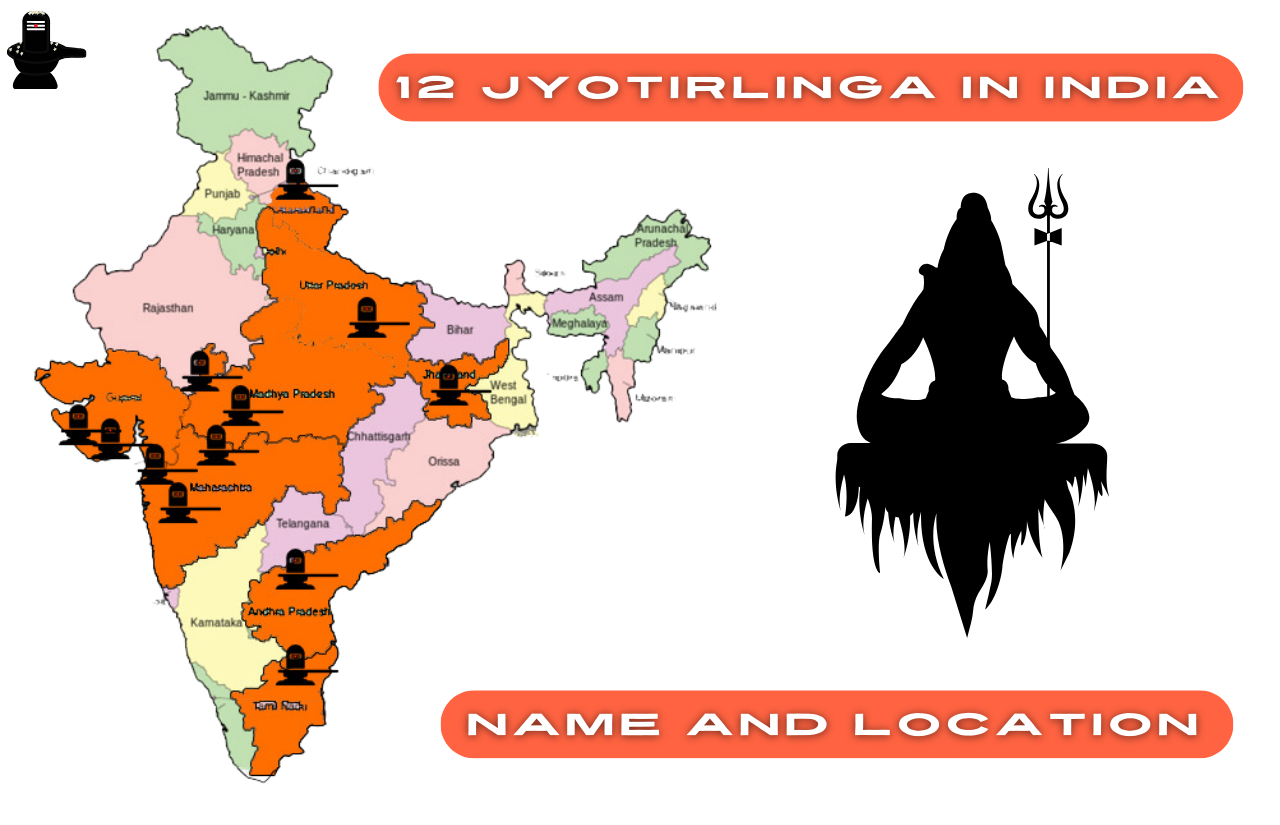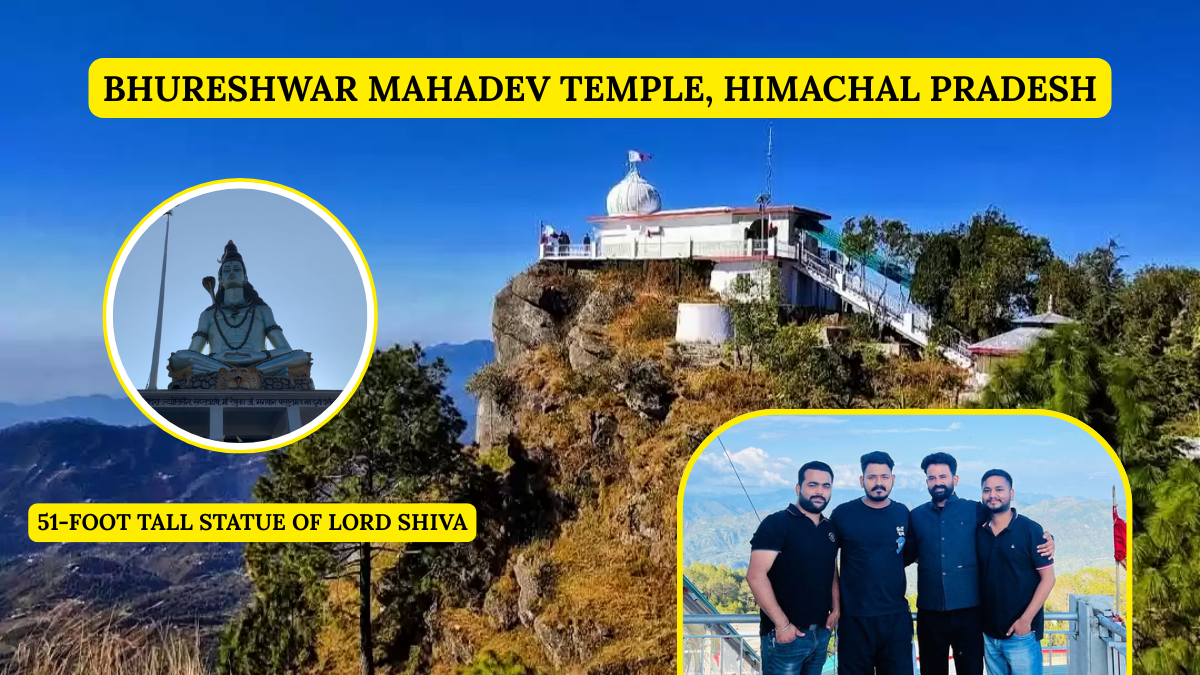12 Jyotirlingas of Lord Shiva in India
Lord Shiva is one of the most revered idols in Hinduism. He is highly esteemed in the faith, and his 12 sacred statues are referred to as jyotirlingas by those who follow him. There are 12 Jyotirlinga in India. The Jyotirlinga is especially revered because it is thought that this is the night that Lord Shiva made his first appearance on Earth. The Jyotirlingas don’t have a distinctive look to distinguish them.
History of Lord Shiva
One of the religions with the largest global following is Hinduism. Its core beliefs are centered around three deities: Shiva, Vishnu, and Brahma. All three of these gods are also identified as traders.
Significance
Shiva, one of the three, is revered for acting on strong emotions and is supposed to be the world’s slayer of evil. He does have a wife named Parvati, sometimes known as Shakti, and two sons, Ganesh and Kartikeya.
Shiva is revered as Shiv Lingo in nations like India. He needs a friend named Nandi, a bull. Although there have been as many as 64 Jyotirlingas in the area, just about 12 are regarded as being among the most significant. Shiva is symbolized by these 12 Jyotirlinga in India.
One way to explain a jyotirlinga is as an example of Shiva. It’s a Sanskrit word meaning “radiance.” The Hindu mythology of Shiva states that there are up to 64 Jyotirlingas. These same twelve are referred to as Great Jyotirlingas, or Mahajyotirlingam. These twelve Jyotirlingas are extremely significant.
List of 12 jyotirlinga in India:
[table id=6 /]
Somnath Temple, Gujarat
The Somnath temple in Prabhas Patan is thought to be the first of Shiva’s twelve Jyotirlinga shrines. It is regarded as one of the most significant pilgrimages in India and a top Gujarat tourism destination. Shiva’s title Somnath means “Lord of the Soma.” The Moon God himself is said to have built the Somnath Temple, which makes its history quite intriguing. The fearsome house of worship has withstood multiple assaults—it was destroyed sixteen times and rebuilt—but it has managed to stand firm.
Mallikarjuna, Andhra Pradesh
The Sri Mallikarjuna Jyotirlinga Temple is situated in Andhra Pradesh’s Srisailam. The primary festival observed at the Srisailam Mallikarjuna Swamy temple is Maha Shivaratri, while the god of worship is Lord Shiva, also known as Mallikarjuna. The Hindu tale states that Shiva and Parvati stayed in Shrishailam to be near their son Kartikey, who had chosen to live by himself on Mount Kravunja. Among the 275 Paadal Petra Sthalams, which are among the best Lord Shiva temples in Asia, is Mallikarjuna Jyotirlinga.
Mahakaleshwar, Madhya Pradesh
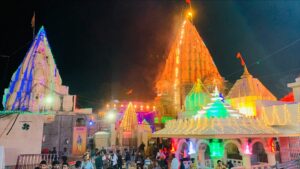
Located in Madhya Pradesh’s historic city of Ujjain, is the shrine of Shri Mahakaleshwar Jyotirlinga. Given that the idol of Mahakaleshwar is believed to be dakshinamurti, it faces south. The lingam at the Mahakala, one of the 12 Jyotirlingas in India, is said to be swayambhu, or born of itself, drawing power currents, or shakti, from within. On the occasion of Maha Shivratri, a large fair is held in the temple, and followers of Lord Shiva worship all night long. The city of Ujjain is said to be blessed by Shiva, the god of time.
Omkareshwar, Madhya Pradesh
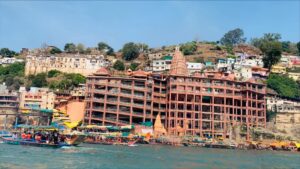
One of the twelve revered Jyotirlinga shrines, Omkareshwar Jyotrilinga, is located in Madhya Pradesh on the island of Mandhata in the Narmada River. The island appears to be shaped like an om, hence the name Omkareshwar. Omkareshwar, which translates to “Lord of Omkaara or the Lord of the Om Sound,” and Amareshwar, which means “Immortal lord” or “lord of the Immortals or Devas,” are the two principal temples dedicated to Lord Shiva. After Mahakaleshwar in Ujjain, this is the second Jyotirlinga shrine in Madhya Pradesh.
Kedarnath, Uttarakhand
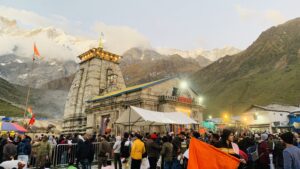
For devotees of Lord Mahadev, this is the most challenging 12 Jyotirlinga in India to visit. Reaching the Jyotirlinga, which is 3,583 meters above sea level and situated near Kedarnath Temple in Uttarakhand, is still difficult due to the region’s harsh weather. It is only available for six months out of the year. Built by the Pandavas and brought back to life by Adi Sankaracharya, it is one of the 275 Paadal Petra Sthalams.
Bhimashankar, Maharashtra
Pune is home to Bhimashankar Temple, one of Maharashtra’s five Jyotirlinga shrines. Additionally, it is the source of the Bhima River in the Khed Taluka’s Bhimashankar highlands. This 18th-century temple was constructed in the Nagara architectural style. The old tale states that the ancient shrine was built over a Shiva Linga, also known as a Swayambhu Linga or a Self-Emanated Shiva Linga.
Kashi Vishwanath, Uttar Pradesh
Kashi Vishwanath Temple is among the most well-known temples in India. The Jyotirlinga shrine, dedicated to Lord Shiva, is situated in Varanasi, Uttar Pradesh, and is built on the banks of the sacred Ganga River. Known as the most sacred of all Shiva temples, Vishvanatha is also known as the Universe’s Ruler. Shiva enthusiasts from all over the world swarm the ghats on the occasion of Maha Shivaratri. Hindu mythology states that on the joyous and fervently observed day of Mahashivratri, Lord Shiva wed Goddess Parvati.
Trimbakeshwar, Maharashtra
Trimbakeshwar Shiva Temple, which is situated in Nashik, Maharashtra, is another Jyotirlinga shrine. At the base of Brahmagiri Mountain is the temple. As per the Shiva Purana, Lord Shiva chose to take on the form of Trimbakeshwar at the behest of Godavari and Gautam Rishi. The jyotirlinga is regarded as special because it has three faces, which stand for Lord Shiva, Lord Vishnu, and Lord Brahma. The golden mask of the three gods is covered with a jeweled crown that holds the Jyotirlinga in place.
Nageshvara, Gujarat
In Gujarat, the Jyotirlinga temple of Nageshvara is close to Dwarka. Nageshvara Jyotirlinga is located in “the Darukavana,” an old Indian forest, according to the Shiva Purana. According to Indian legend, Lord Krishna once performed rudrabhishekam.
Baidyanath, Jharkhand
The Baidyanath Temple, also known as Baba Baidyanath Dham or just Baba Dham, is one of Lord Shiva’s holiest places. The location of this Jyotirlinga shrine is in Jharkhand’s Deoghar. The name Vaidhya, which means “doctor,” comes from the fact that Lord Shiva healed Ravana, the demon king, who was the most devoted follower of Shiva. Millions of visitors travel to the shrine to see the Shraavana mela, and the temple also hosts the well-known Maha Shivratri celebration.
Ramanathaswamy, Tamil Nadu
The temple of Jyotirlinga at Rameswaram is one of India’s holiest and most revered pilgrimage sites. Hindu mythology states that Lord Rama himself created the jyotirlingam as a way to atone for murdering the Brahmin Ravana on the battlefield. When it got late, he worshipped Devi Sita’s sand lingam instead of asking Hanuman to bring a lingam from Kailash. It is thought that the sanctum contains an identical lingam. The name Ramanathar refers to this Lingam that Lord Rama adored. Located on Tamil Nadu’s Rameswaram Island lies the Ramanathaswamy Temple.
Grishneshwar, Maharashtra
12 Jyotirlinga in India the Shiva Purana is Grishneshwar Jyotirlinga, also known as Ghrneshwar Jyotirlinga or Dhushmeshwar temple. It is situated in Maharashtra’s Aurangabad. Ghrneshwar, which translates to “lord of compassion,” is said to be the twelfth or last Jyotirlinga (linga of light). The five-tiered shikhara of the Grishneshwar Jyotirlinga temple is made of red rock. It is also the smallest of Lord Shiva’s Jyotirlinga temples in India.
Conclusion
You probably did not know all 12 of these Jyotirlinga locations before. In fact, Hindus all over the world make pilgrimages to India’s 12 Jyotirlingas. Thus, are you excited to discover India’s divine jyotirlingas? So, visit these holy sites to connect with India’s spiritual essence and feel the divine energy that resides there. Hence, plan your trip, surprise your family, and take a vacation to any of these destinations. For more information about other latest travel destinations and other kinds of information like technology, entertainment, etc, stay connected with TaazaBytes.
